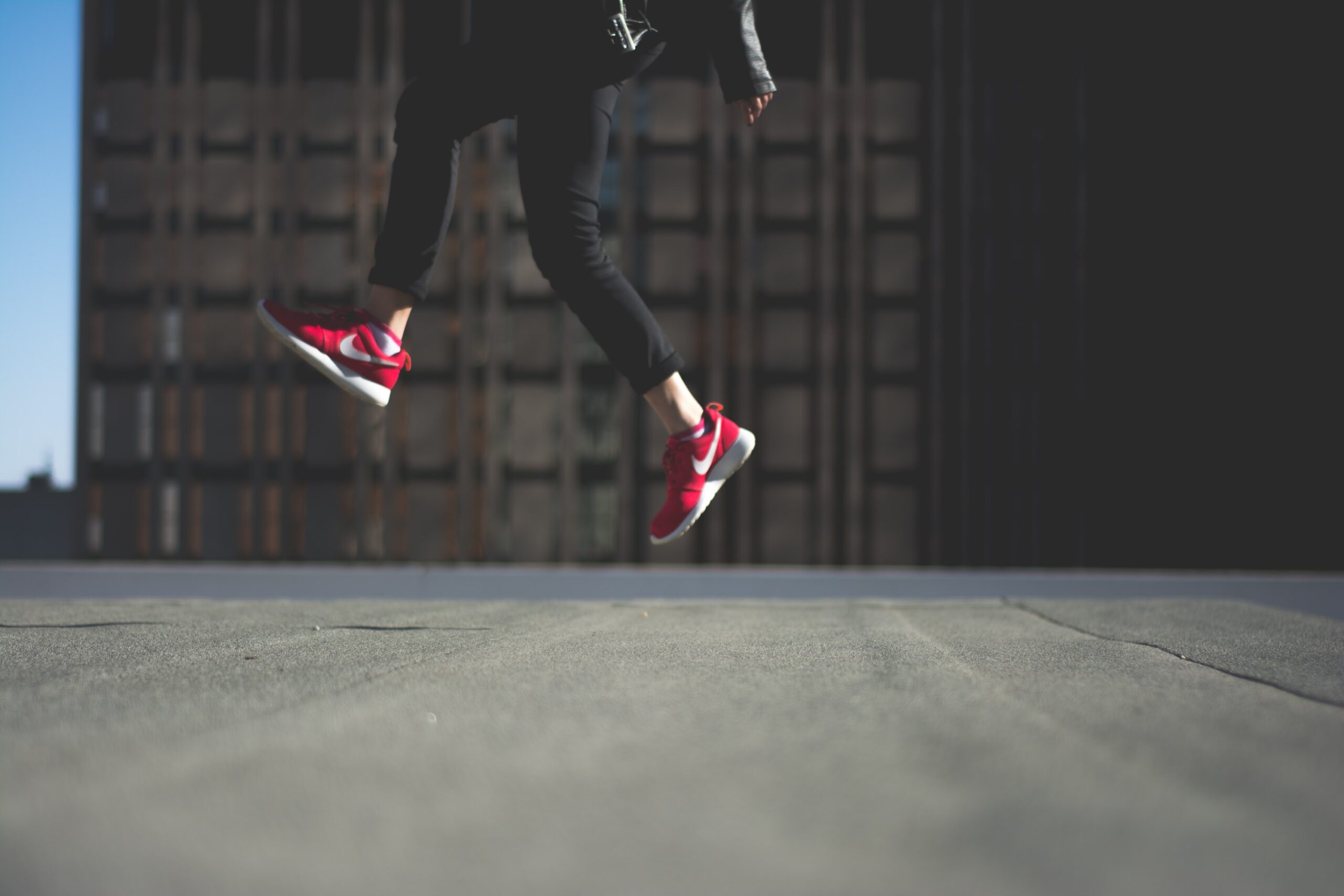and why this is so good for most people!
Recently, there was some in-class debate over jumping – specifically, who should, how often, and is it even safe? SSoD Trainer Miriam is joined by our resident jumping queen, Studio SWEAT Member Kimberly, to discuss why jumping IS so important.
Who should jump?
We know jumping isn’t in the cards for everyone, so who should include jumping in their workout routines (and who should not)?
• If you have suffered an injury that limits/prevents you from jumping, then abstain until healed/recovered/released by a doctor.
• If you are diagnosed with osteoporosis, please consult a doctor before commencing with a program like this.
• Other than that, almost everyone (especially those over 40) should consider including jumping in their fitness routines.
Speaking of jumping, if you’ve ever done a Studio SWEAT class in person or online with Miriam, you know she’s jumping a lot. Kimberly modifies much of her workout to include extra jumps as well. Will it surprise you to know that Miriam is 41 and Kimberly is 54? Kimberly found that adding daily jumping (and stretching) has helped her maintain an active lifestyle as she has gotten older.
Why most should jump:
Why is jumping so good for the general population? Research shows that peak bone mass happens around age 25 and then declines. Five to seven years after menopause women may lose up to 20% or more bone mineral density (BMD). To make matters worse, as we age we’re less likely to perform high-impact, bone-building activities.
• A consistent program of jumping will improve the bone mineral density of all women.
• Jumping builds strength and improves muscle tone.
• Jumping is an excellent and efficient calorie-burner and stimulates your metabolism.
• Jumping increases oxygen capacity and circulation to tissues.
• Jumping improves your sense of balance and agility – functional training for life’s movements.
• Jumping improves the circulation of the lymph through the lymph glands – “detoxing” helps move waste faster and improves immunity.
• It strengthens the heart, improving cardiovascular health.
• You’ll notice increased energy and an overall sense of vitality (it’s fun!)
• Jumping requires no equipment or any specialized gear and can be done in all planes of motion.

How often should you jump?
If you’re going to incorporate jumping, the frequency is at a scientific sweet spot.
This study on jumping programs in premenopausal women found that the biggest benefit is by including jumping in your daily routine, incorporating 10 jumps with 30 seconds in between.
“Our study showed significant benefits over time,” says Dr. Tucker. “Women have to do the jumps daily to get the benefits. In addition, keep in mind, as women age it’s more and more difficult to improve bone density. Skeletal unloading, such as long bed rest, immobilization, and microgravity environment, lead to bone loss, whereas the positive effects of physical exercise on bone mass is generally acknowledged. In the study group, after 16 weeks of high-impact jump training (10 or 20 times, twice daily, with 30 seconds of rest between each jump) led to improved BMD at the hip and trochanter – key to simple life long activities such as walking! As a caveat, running and jogging have less impact on bone density because of the repeated bone stress – the 30-second interval in between jumps is key.”
Do you get that? We aren’t talking fast jumping like you get from running. This jumping is ONE jump with a 30-second interval before the next. Try doing an isometric squat for 30 seconds and then explode into a jump.
How to safely incorporate jumping into your routine:
There is a “safest way to jump” while gaining max benefits, and like most exercises, there are options and modifications.
• If you’re new to jumping, try by starting with a gentle knee bend, and just work one foot up and down at a time.
• Simple Jump: start with feet hip-width, a gentle bend in knees, jump vertically until your big toe just barely leaves the ground using the toe-ball-heel and soft landing while bending knees.
• Alternatives:
– Try with a split stance (one leg forward/one back like a lunge position).
– A plié jump may be less stress on your low back.
– If you’re wobbly, use a chair or wall for balance.
– Try rebounding on a trampoline for a gentle way to jump.
Common fears and misconceptions:
Our Studio SWEAT trainers have heard things like “Can I injure myself?” or “If I’m post-injury, I’m sure I can’t jump.” As we’ve mentioned, if you have osteoporosis or have had an injury prohibiting jumping, don’t jump, and do talk to your medical provider about a safe alternative or return to jumping. But if jumping IS ok for you, remember to stay flexible in your mind, and follow our tips for working up to a full jump.
As another Studio SWEAT member, 52-year-old Tatia, shares, even after knee injuries on both knees, jumping is possible. She reminds you to listen to your body, and don’t force yourself when you shouldn’t. Tatia finds that some days she can, some days she can’t. When she needs to, she’ll modify to what is possible.
So why don’t you give it a try, and jump to get that “leg up” as you get older? Try out some body-sculpting, fat-torching workouts where you can even get your jumps in at Studio SWEAT onDemand! Download the app, or if you happen to live in southern California, visit us in our San Diego studio.

















Comments - 0